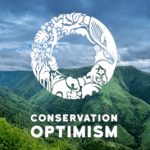Wondering what went right this week in the conservation world? We’ve got you covered with our Conservation Optimism Round-Up! We are collating stories of optimism from around the globe so that you never miss your dose of weekly motivation.
1.Explosion in frog numbers after mass pond digging
” Switzerland has reversed the decline of more than half of endangered frogs, toads and newts in one region, research finds. After conservationists dug hundreds of new ponds in the canton of Aargau, amphibian numbers significantly increased. ”
Switzerland has reversed the decline of more than half of endangered frogs, toads and newts in one region, research finds. #ConservationOptimism
— National Environmental Treasure (@Our_Safety_NET) October 13, 2022
Via @BBCNews https://t.co/UIWtZ3KNsR
2. Hope for Malawi: Sustainable Fisheries and the Growth of Freshwater Aquaculture
” Sub-Saharan African aquaculture projects are bolstering semi-subsistence sustainable food economies for poor rural consumers and markets. Targeted supply chain interventions, such as sourcing fingerlings (baby fish) and expanding hatcheries have created more jobs for nations with high food insecurity, and are vulnerable to extreme weather events. “
Hope for Malawi: Sustainable Fisheries and the Growth of Freshwater Aquaculture.
— Restore Our Planet (@Restore_Planet) October 13, 2022
Our latest 👇https://t.co/EGwm1Y8gDx#ConservationOptimism #Malawi #SustainableFisheries #Sustainability #RestoreOurPlanet #ClimateChange pic.twitter.com/jnPRvHcia7
3. The Canada goose is the definition of a conservation success story
“‘”They are the definition of a conservation success story. Once thought to be extinct now considered by some to be over abundant, maybe even a pest. We have two hunting seasons for them in our province over the year. They’re doing okay.” “
Once on the brink of extinction in #Canada, the Canada #Goose is flourishing today thanks to #conservation efforts that helped regulate hunting activities!#geese #birds #waterfowl #nature #wildlife #biodiversity #conservationoptimism #LetNatureThrive https://t.co/XowR0znqwv
— Global Conservation Solutions (@_GCS_) October 12, 2022
4. Forests follow unexpected—and surprisingly fast—paths to recovery
” A new study found that carbon, nitrogen and soil density in cleared forests reached 90% of levels in untouched forests after 1 to 9 years. They key was leaving them alone.”
#ConservationOptimism https://t.co/oml5Nl5YKT
— Erle Ellis (艾尔青) (@erleellis) October 12, 2022
5. Wolves, bears and bison: 50 species make ‘spectacular’ comeback in Europe
” Wolves are one of the most iconic populations to experience a resurgence. Grey wolves used to roam across the continent. But they nearly disappeared in the 20th century, as humans encroached on their habitats and hunted them down. Since the 1970s, population numbers have boomed by 1,800 per cent to 17,000. The brown bear is another carnivore making a comeback thanks to these efforts. Since 1960, populations have increased by 44 per cent. “
Thanks to #conservation efforts across #Europe, pop'ns of over 50 #wildlife species are recovering, including #Bison, #Moose, #Beavers, and #Wolves!#recovery #mammals #nature #biodiversity #optimism #conservationoptimism #news #LetNatureThrive https://t.co/a2uxFdlMUV
— Global Conservation Solutions (@_GCS_) October 11, 2022
6. Juvenile endangered seahorses have been released again in man-made ‘seahorse hotels’
” Juvenile endangered White’s Seahorses (Hippocampus whitei) have been released back into the wild this week at 15 ‘seahorse hotels’ in Botany Bay, Sydney. This is the third successful release of seahorses bred and raised by experts from SEA LIFE Sydney Aquarium, in a three-year ongoing collaboration to help recover the species’ declining population. “
I knew about bee hotels, but not seahorse hotels! #OceanOptimism #EarthOptimism https://t.co/9LdK8wPJLG
— Dr. Nancy Knowlton (@SeaCitizens) September 30, 2022
7. Seastock completes first harvest of methane-reducing seaweed asparagopsis in Western Australia
” Australian researchers have found, when added to the feed of cattle and other ruminant stock, the native seaweed can virtually eliminate methane emissions. “
Methane-reducing seaweed harvested in Western Australia https://t.co/4XVKT1BbRw #oceanoptimism
— Aquaculture Daily (@BergmJon) October 5, 2022
Have a story to share for our weekly round-up? Use #ConservationOptimism on Twitter, Facebook, LinkedIn and Instagram!


